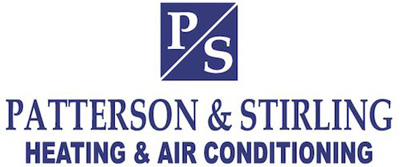
If you’re needing air conditioner installation in Erie, you should also be considering your new air conditioner’s SEER rating.
SEER means Seasonal Energy Efficiency Rating. In short, it measures how productive your air conditioner is at turning electricity into cooled air. A high number signifies your air conditioner is more efficient, which is excellent for your energy expenses.
However, there are many different solutions out there for air conditioners. And a greater SEER ranking typically is accompanied by a more expensive price tag. So, how can you find out which one is best for your home?
At Patterson & Stirling, we provide a free, no-pressure home comfort analysis. You can book one by contacting us at 814-739-6977. Our experienced air conditioner installers will work with you to help you find the right air conditioner for your budget. Plus, they’ll also offer you a free, no-obligation estimate.
In the meantime, let’s discuss SEER ratings and how they can affect your loved ones’ comfort. And your electric costs.
Does SEER Rating Really Matter?
In 2016, the federal government created new SEER rules. New air conditioners are mandated at minimum 13 SEER in the north United States and 14 SEER in the southeast and southwest. If you’re not sure when you had your air conditioner installed or what its SEER ranking is, you can find the sticker on the condenser outside your home. If you can’t find the sticker, you can reach us at 814-739-6977 for support.
If your air conditioner was installed before that year, it’s probably much less efficient. Air conditioning technology has quickly changed in the past several years, with major developments in energy efficiency and smart home compatibility. Connecting your new air conditioner with a smart thermostat could help you conserve more on electrical costs, because the thermostat can automatically regulate your temperature settings when you’re away.
If your present air conditioner has a SEER rating between 8 and 10, adding a 14-SEER system could save you close to 30–50% on annual cooling costs. Your savings are contingent upon your air conditioner size and your temperature settings.
Is the Higher the SEER the Better?
An air conditioner with a higher SEER rating will be more efficient at converting electricity for cooling. The most efficient systems, which can go as high as 26 SEER, have ENERGY STAR® endorsement. This certification shows the air conditioner has achieved EPA guidelines for energy savings and environmental conservation.
While ENERGY STAR air conditioners are typically pricier, you’ll generally get the difference returned over time through smaller power costs. These air conditioners, which are frequently rated 16 SEER and higher, use about 8% less power than other new models, according to ENERGY STAR.
One of the biggest differences between a 14 SEER and 16 SEER is variable-speed capability. A variable-speed air conditioner can cool at different speeds. This fine-tunes comfort for your house while keeping your utility expenses low. It can also keep temperatures and humidity more balanced, since it can go for longer without consuming a lot more energy.
When adding a variable-speed air conditioner, you’ll need to make sure that your furnace or air handler is compatible. This is due to the fact your air conditioner relies on this equipment’s blower to send cool air around your residence. Furnaces only work for around 20 years, so if yours is around that mark, we suggest getting furnace installation at the same time so you can get all the perks of your variable-speed air conditioner.
When you’re ready to replace your air conditioner, the cooling professionals at Patterson & Stirling are available to help. Reach us at 814-739-6977 to schedule your free home comfort analysis today.



